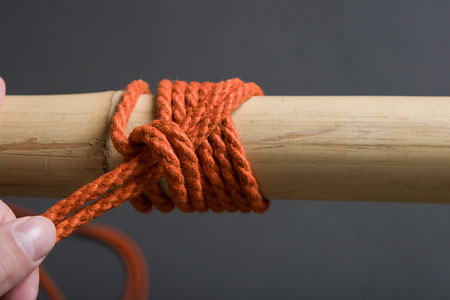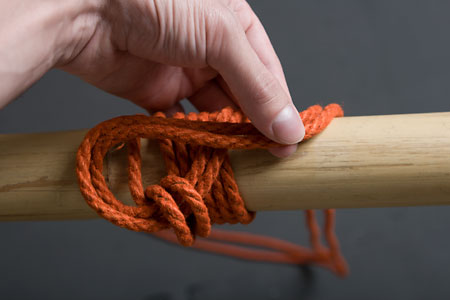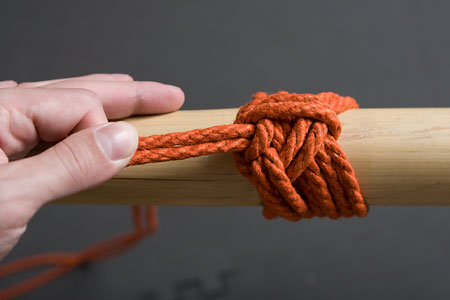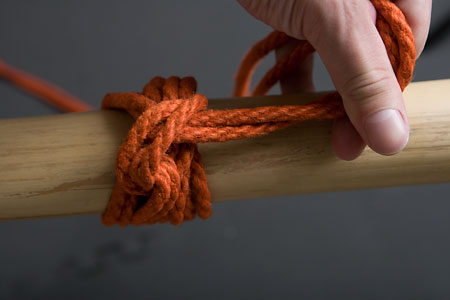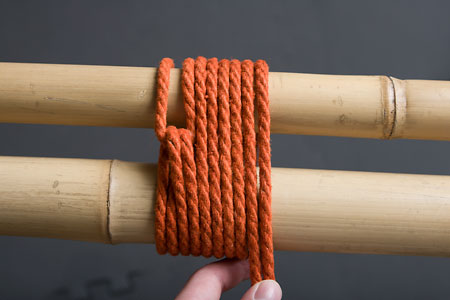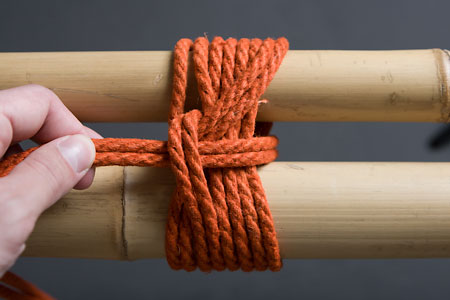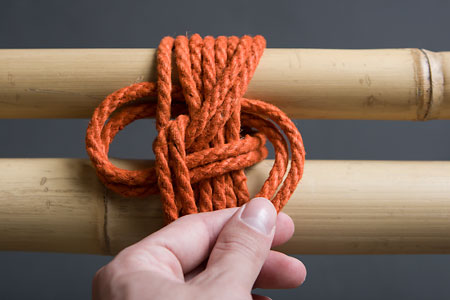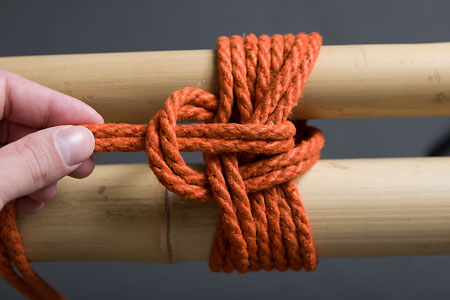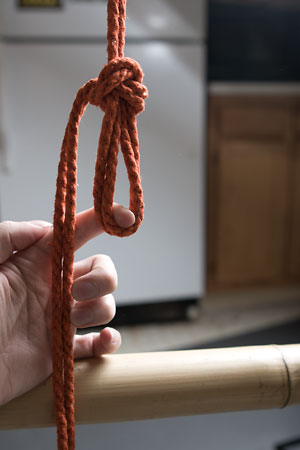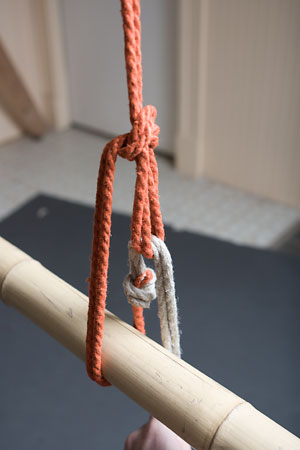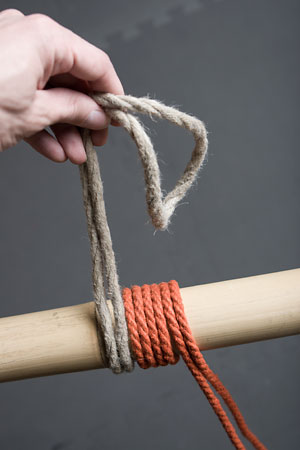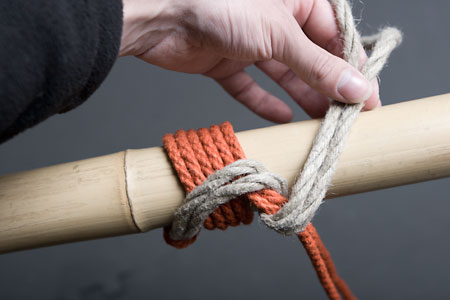I recently posted videos of two ways to add arms in at the end when tying a Shinju-type chest harness for suspension; one that just adds some simple support wraps, and another that mimics the wraps of a takate kote.
In general, I'm a big fan of tying the arms in last when starting an extended scene, because then I know if the arms/hands start to have circulation/nerve issues, I can untie just the arms and reposition them without having to untie everything else. This makes everybody a lot safer, because bottoms tend to be less reluctant to mention a problem when they know it can be easily fixed and won't spell an end to play.
Of course, sometimes you want to get control of someone's hands right away. In that type of situation, one option is to do a temporary wrist tie, then re-tie the hands at the end of tying other harnesses. That way you get all the benefits of having the hands bound for the entire scene, and of being able to easily reposition them.



